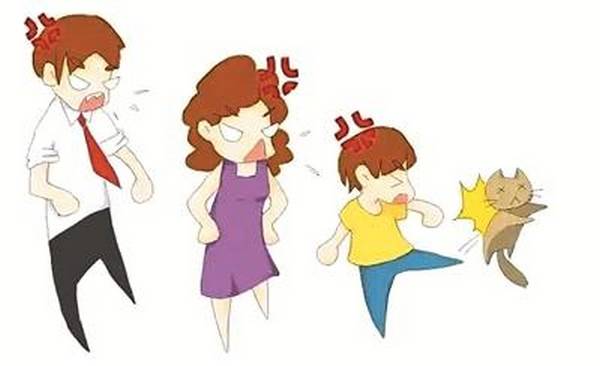- A+
??作者 唐春charles
英语究竟是什么?
??????? 远古某日,部落一壮年伙伴,猎于茂林之间。运不佳,追野牛几耗全力,终无获。席地而憩,遂叹。忽听咆哮数声,遁声望去,一饥熊大奔而来。慌起,弃长矛木仗,仓皇奔林深之处。熊见之,遂追。但见近于咫尺,竭力各攀一树。熊至,逡巡良久,无奈,遂远去。待远,诸人下,旋归。历难无险,心慰,欲诉之其妇。奈何无语,虽上下窜跃,极尽解数,妇久未解。
?????? 你看,有惊无险的一次人生经历,原始人却不能让其妻子知晓。原因很简单,没有语言或其他有效交际交流手段,让别人理解你很难。
?????? 如果原始人生活在现代,那他们可以有多种方式告诉妻子自己究竟经历了什么,让妻子明了。
?????? 摄像机镜头、手机拍照、摄影、绘画、语言、文字等作为反映现实、沟通交流的有效方式都可以还原事件整个过程。但除了语言,多种方式都具有时空局限性。多种方式其间,唯有语言是最佳解决方案,不受时空所限,寥寥数语,原始人亢奋之情便能被表达的淋漓尽致。
?????? 至此可得,英语作为语言的一种,其是英美人解决他们之间及与世界间沟通交流问题的一种最佳解决方
案。
英语,究竟能干什么?
?????? 以上述故事为例,即使原始人借用语言为交流工具,也要按一定顺序娓娓道来,不可能如水一般倾盆而下,再者说倾听者也一定要有一个消化过程,因此一句一个叙述重点,按顺序一句句表达成了一种符合思维规律和人类语言接受习惯的自然选择。
且看原始夫妇运用英语对话的一个版本:
today i was near to die.
what happened?
we met two bears when we went hunting in the forest.
why didn’t you kill them?
at first, we ran after a buffalo.but it’s so strong that we couldn’t catch it. we were feeling disapointed and pretty tired, too. so we stopped and had a rest. just then,two bears appeared. they looked really hungry and roared and ran to us.
........
??????? 仅此。学英语一定是一个由不地道到地道的渐进过程,一定是有一个先语法正确再不断通过多接触外国文化、不断吸纳吐新的螺旋前行过程。而那种试图通过把诸多英语现成的对话、文章复印到大脑的方法适用性和学习效果都值得商榷。
英语究竟怎样说?
??????
?????? 语言实质就是将若干个与现实中人、物、动作、状态等对应的语言符号连缀起来,从而在人想象力参与下,在人脑中勾勒、临摹一个近似现实的世界,也就是说语言只能尽力模拟现实,但不能100%。????
??????? 我们知道,在沟通交流方式中,电影、视频、照片、图片其实是最接近现实世界的方式,他们以最为直观形式直接将人像、物像呈现在我们面前,但好多情景、场景却非这些所不能达,即使能达也不能迅速达,受时空很大限制,而语言便没有。
??????? 既然知道语言只能尽量描摹现实,那我们不妨在上图中找主要信息点。想象一下,你看到了一幅幅图片,要把这些图片的内容告诉给没有看到这些图片的人们,怎样描述才能让他们头脑中形成的画面无限接近与你看到的这个场景呢?
??????? 首先当然要知道代替物、动作、特点的语言符号,也就是单词,比如 boy/take care of/wolf等。知道的与场景有关的词汇越多,对描述越会有帮助,相反,如果仅仅知道有限几个代表符号,场景是很难被别人在大脑中解读的。
?????? 然后按一定规则排列词汇,组成一句句话,一句句话按一定顺序组成段落和篇章。
下面以一例来看怎样用语言模拟现实:
a boy, john, was once taking care of some sheep.
上面这副图中要知道与人、物、动作等有关的英语对应符号: boy/sheep/take care of.../forest/vilage...,当然时间也应该看到,比如:once/one day/ morning,因为这些东西牵涉到每句话完美表达。
one day, he cried out, with all his might,’ wolf !
上面这副图中要知道与人、物、动作等有关的英语对应符号:he/cry out/all his might/farmer/work/fields...
men came running with clubs and axes to destroy..
在上面这副图中要知道与人、物、动作等有关的英语对应符号:he/cry out/all his might/farmer/work/fields...
john cried out again the next day, ’the wolf’
上面这副图中要知道与人、物、动作等有关的英语对应符号:men/ came running/ clubs and axes/destroy/wolf等。
another day, the wolf did come.
上面这副图中要知道与人、物、动作等有关的英语对应符号: wolf came/ cried in dismay/not a single man /came to help/broke into the flock/killed sheep等。
然后按一定规则排列词汇,组成一句句话,一句句话按一定顺序组成段落和篇章。
第一幅图:a boy was once taking care of some sheep, not far from a forest. near by was a village.
第二幅图: one day, he sat under the shade of a tree and saw the sheep eating grass happily. he had nothing to do. not far from him, some farmers were working on the farm. suddenly an idea came to him. in order to have some fun, he cried out, with all his might,’ the wolf is coming!the wolf is coming!’
第三幅图:the men came running with clubs and axes to destroy the wolf. as they saw nothing they went back again, and left the boy laughing in his sleeve.
第四幅图:as he had so much fun this time, john cried out again the next day, ’the wolf! the wolf! the men came again, but not so 
many as the first time. again they saw no wolf; so they shook their heads, and went back.
第五幅图: on the third day, the wolf came in earnest. john cried in dismay, ’help! help! the wolf! the wolf!’ but not a single man came to help him. the wolf broke into the flock, and killed a great many sheep.
思考题:
试探讨用英语解读现实世界,所用语言顺序有规律吗?????




